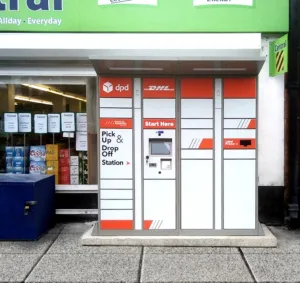by James Willoughby, Head of Retail at Sense
Two major developments have converged to turn some traditional FMCG marketing strategies sour.
The cost-of-living crisis has resulted in shoppers trying to make cutbacks in their food shopping as other household bills soar. Research from FMCG Gurus suggests consumers feel their country is in a recession regardless of whether or not it is by definition. This means many shoppers will be adopting recessionary-style spending.
If that wasn’t enough, FMCG brands are also getting to grips with major changes to online advertising. Updated privacy restrictions on third-party cookies mean marketers will no longer have oversight of customer behaviours as they browse and buy on the internet.
But all is not lost – and budgets certainly aren’t being diverted away from promotional marketing. In fact, according to WARC figures published in April 2023, promotional marketing budgets are enjoying the biggest positive readjustment in brands’ changes to their overall marketing plans.
Eye on the prize
In light of the market challenges it is perhaps not surprising that prize promotions should be viewed as playing a key part in the wider connected experience.
They also provide an opportunity to receive data that is otherwise out of reach as cookies crumble. And they can be used in a range of situations, including linking to a high-profile occasion, such as a major sporting event or even a national event, as we’ve just seen with the Coronation.
They are particularly relevant for brands when trying to:
- stand-out against competitors
- boost in-store placement negotiations
- increase short-term sales
- spotlight a unique brand proposition
- encourage longer-term trial
- create and reward loyalty
- drive e-commerce traffic and first-party data capture
And as the cost-of-living crisis grinds on, shoppers are viewing prize promotions as a way to save money and as the success of the Omaze prize draws show, simply engaging in a bit of escapist hope!
Beyond the instant win
Prize promotions might be fun in the moment for consumers, but crucially research has also found that 33% of participants are happy to receive information about a brand in follow-up communications.
Contests have an extremely high conversion rate of almost 34%, which is significant when compared to (for example) PPC that typically has conversion rates far below that figure. It’s important to note that consumers react as favourably to smaller cash-value prizes as they do to larger ones. Our research also shows no real preference between having a lower-odds chance of winning than a higher-odds one. Shoppers are not decoding chances to win, they are seeing something that is different and making a choice (not a decision).
Prize promotion pitfalls
Brands tend to make the same easily avoidable mistakes when it comes to prize promotions. Firstly, they need to make sure the prize on offer is believable for the size of the brand – only a small amount of power brands can pay out large prize funds. Consumers are smart and will question the validity of a small brand offering to give away a million pounds, in order for consumers to trust in what’s up for grabs, brands should look at publicly announcing the winners at the end of a campaign to ensure people know it’s legit.
Trust and transparency are key when it comes to prize promotions. It may seem obvious, but so many brands fail to be transparent about the terms and conditions of entering a competition, or sometimes even fail to effectively communicate the entry method. This inevitably leads to confused customers, complaints on social media and, albeit rare, legal complications – all of which are best to be avoided.
Brands also need to look at taking adequate security measures to protect their competitions. Obviously printing unique reference numbers onto packaging is expensive so it isn’t the first choice approach – yet by avoiding doing this, it’s much easier for bots (and persistent humans!) to play the system. Another way to manage security is by asking the winners for proof of purchase that pre-dates competition entry.
Another slip-up brands can often make is not supporting the promotion with a big enough media budget, which is necessary if you are a brand with limited facings and a less than preferable position on shelf. A good rule of thumb is to check if the supporting media budget outweighs the cost of the promotion by at least 3 to 1. If it does, then ROI will be maximised.
Scratch the surface of prize promotions and brands will understand that they can be complex, but offer competitive advantage by engaging consumers in ways other marketing strategies simply can’t. At a time when wider industry challenges are forcing brands to think outside the box, could it be that prize promotions are becoming cool again?










